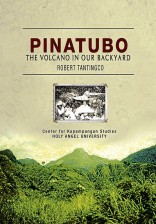
It deftly wove rich details and information gathered by experts, journalists, researchers and the Holy Angel University’s Center for Kapampangan Studies on pre-historic Pampanga and Mt. Pinatubo.
This creates an order that helps Tantingco meet his two aims: For Kapampangans to “revisit those earthshaking and life-changing events any time they want” and for readers to “situate their individual experiences in the book’s timeline.”
Tantingco tells Pinatubo’s story simply. Photographs (a number of them rare or personal), illustrations and narratives of victims, survivors and leaders further enrich the book.
The book is honest and never conceals issues of greed amid misery.
Tantingco pieces an orderly narrative because with the privilege of time, he is viewing the disaster and its aftermath from the perspective of a true Kapampangan.
“I dedicate this to those who went through the horror, the panic, the grief, and the desperation of those calamitous years, those who endured them, survived them, and ultimately triumphed over them. I dedicate it especially to those who had the bravery and the heroism to help others despite being victims themselves,” he says.
“This book is also for those who weren’t there when it happened—those who were not born yet, and those who were in another place (out of necessity and circumstance). They missed a great teachable moment. I hope that through this book, they will vicariously go through the same ordeal and get the same lessons the survivors got.”
Some people, Tantingco says, “see a crater lake that’s valued only as a magnet for tourists, not as a remembrance of past sorrows.”
“It’s time to retell the amazing story of Pinatubo and the equally amazing stories of Kapampangans who endured that season of horrific calamities,” he says.